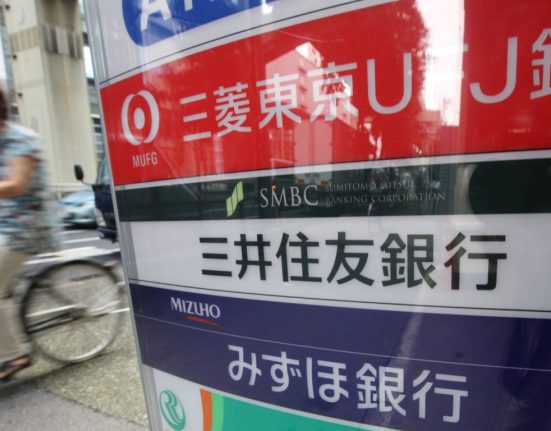Based on feedback from the industry and the government’s department of financial services, the final norms are easier than the previously proposed draft norms. They include a higher loan-to-value (LTV) ratio for small-ticket loans and don’t require credit appraisal for such loans.
The deadline to implement these guidelines has also been extended to April 2026. Mint takes a look at what it means for lenders and borrowers.
What do the final guidelines say?
The final guidelines on these loans, much like the draft norms, look to classify them based on their purpose. The RBI has detailed two broad categories— ‘income-generating loans’, which are extended for productive economic activities such as farm credit, business or commercial purposes, or the creation or acquisition of productive assets; and ‘consumption loans’, which include all other types of loans. The tenure of consumption loans with bullet repayment – where interest and principal are paid together at the end – has been capped at 12 months.
Also read: A gold loan can solve your cash crunch. Here’s all you need to know about getting one.
RBI has capped the LTV ratio for consumption loans of up to ₹2.5 lakh at 85%, for loans between ₹2.5 lakh and ₹5 lakh at 80%, and for loans above ₹5 lakh at 75%. This is a softer stance than the draft norms, which proposed a maximum LTV ratio of 75%, including for income-generating loans given by non-banking financial companies (NBFCs). The final norms also remove a proposed penalty for breaching the LTV ratio for more than 30 consecutive days, in the form of an additional standard asset provisioning of 1%.
LTV refers to the ratio of the outstanding loan amount to the value of the pledged collateral on any particular day. In case of bullet repayment loans, the LTV calculation takes into account the total amount repayable at maturity.
How else are the final norms different from the draft proposal?
The final norms also address concerns raised by industry players with respect to credit access for small-ticket borrowers, especially in rural areas. The RBI has raised the LTV ratio and exempted small-ticket borrowers from credit appraisals based on feedback from NBFCs, cooperative banks and government departments.
Lenders will need to comply with the new norms by 1 April 2026. The RBI has also eased their implementation by making the norms applicable only to prospective loans. This means loans sanctioned before the new framework comes into effect will continue to be governed by the older guidelines.
Also read: Brisk growth in gold loans likely behind RBI warning
Another point of contention was ownership certification of gold, especially in semi-urban and rural areas, and in cases of inherited or general gold jewellery. In the post-monetary policy press conference, RBI governor Sanjay Malhotra clarified that in such cases, the norms allow for self-declaration.
“A lender shall not extend a loan where ownership of the collateral is doubtful,” RBI’s final norms said, adding that a suitable document or declaration that the borrower is the rightful owner of the eligible collateral will need to be obtained.
What’s the rationale behind the new framework?
According to the RBI, the new norms are aimed at moving towards a more “principle-based and harmonised regulatory framework” across lenders and address “possible prudential and conduct-related gaps”. They also look to address concerns relating to certain lending practices, provide clarity on certain aspects, and strengthen conduct-related aspects.
“Running multiple loans simultaneously to a single borrower or a group of related borrowers may be prone to misuse and susceptible to fraud. Consequently, such practices shall be subject to stricter internal audit and supervisory examination,” the RBI said, adding that such multiple loans will need to be monitored as per anti-money laundering guidelines.
How will the new norms affect lenders?
The RBI said lenders will need to undertake a detailed credit assessment, including an assessment of borrower’s repayment capacity, for loans above ₹2.5 lakh. This effectively excludes small ticket-borrowers seeking emergency funds from additional underwriting processes—another of the industry’s demands.
After that, lenders can renew or sanction a top-up loan if requested by the borrower, but only within the permissible LTV, and provided the loan is classified as ‘standard’, it said. Renewal of bullet repayment loans will be allowed only after payment of accrued interest.
Lenders have also been barred from lending against primary gold or silver, or financial assets backed by primary gold or silver, such as units of exchange-traded funds (ETFs) or mutual funds.
Also read: Muthoot-owned Belstar Microfinance enters gold loan biz to diversify portfolio
They also won’t be allowed to avail of loans by re-pledging gold or silver pledged to it by its borrowers, or extend loans to other lenders, entities or individuals by accepting gold or silver collateral pledged to them by their borrowers as collateral. “The above provision does not preclude a lender from financing another lender against the security of underlying receivables,” the RBI clarified.
Lenders will need to put in place a standardised procedure to assay the purity and weight of gold and silver collateral, and standardise documentation across their branches.
How will the new norms help borrowers?
According to the new norms, borrowers won’t be allowed pledge more than an aggregate of 1 kg of gold ornaments or 10 kg of silver ornaments for all their loans from a lender. The aggregate weight for coins has been capped at 50 grams for gold coins and 500 grams for silver coins.
However, the guidelines are expected to help borrowers by strengthening operational aspects of the lending process across allaying and valuation of the collateral, transparency in the auction process, and by putting greater onus on lenders.
Loan agreements will have to include a description of the eligible collateral and its value, details of the auction procedure and circumstances leading to the auction, and timelines for the release of pledged eligible collateral upon full repayment or settlement. “All applicable charges payable by the borrower, including those related to assaying, auction, etc., shall be clearly included in the loan agreement and key fact statement (KFS),” the RBI said.
Also read: The silver rally has lagged gold’s run. That could change soon.
Any deterioration or discrepancy in the quantity or purity of the gold or silver collateral will need to be communicated to the borrower, including with respect to reimbursement and compensation for the loss. They will also need to provide a copy of the certificate of the collateral’s value and properties to the borrower.
When conducting an auction, lenders will need to declare a reserve price of at least 90% of the collateral value, which may be reduced to 85% in case the auction fails twice. The lender or related parties won’t be allowed to participate in the auction, and any surplus will need to be refunded to the borrower within seven days.
Any delay that’s attributable to the lender will attract borrower compensation of ₹5,000 a day beyond the prescribed timeline. Any pledged collateral lying with a lender beyond two years from the date of full repayment or settlement will be treated as ‘unclaimed’.







